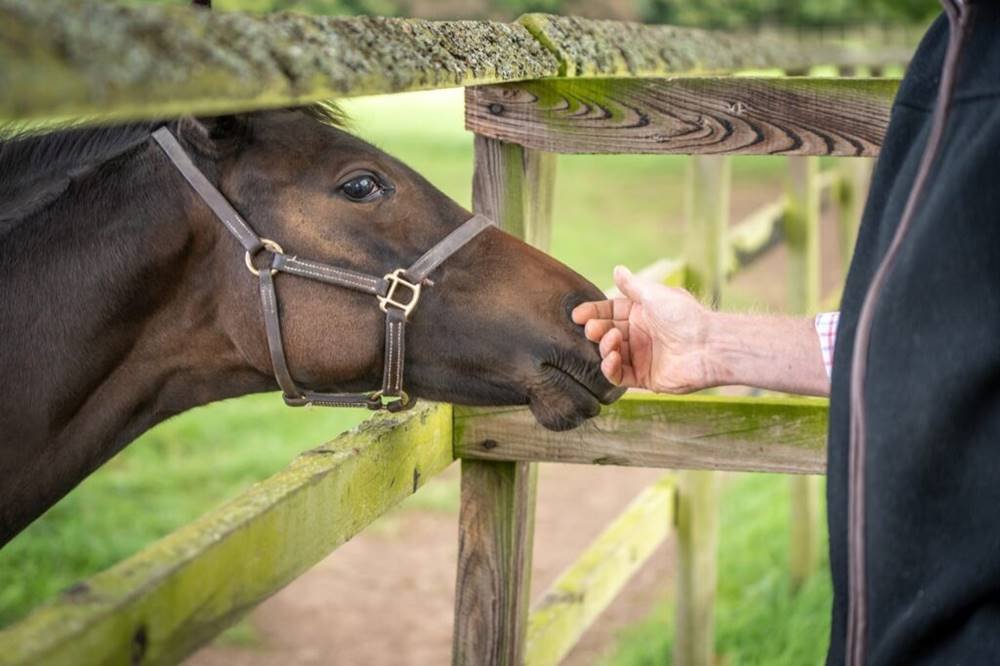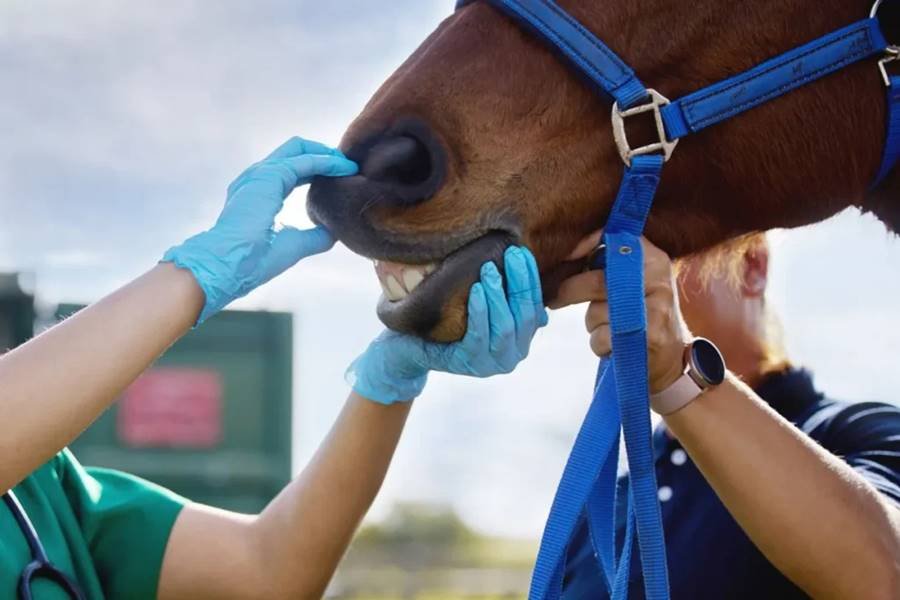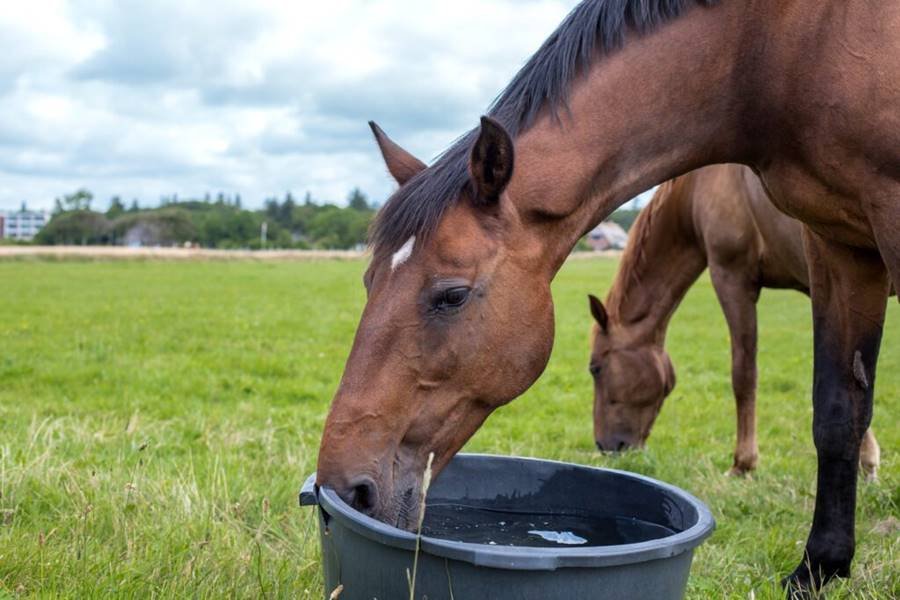Blindness in horses can result from various factors, including:
- Cataracts: Clouding of the eye lens, which can impair vision over time.
- Uveitis: Inflammation of the eye, which can lead to blindness if not treated.
- Trauma or injury: Physical injury to the eye or head can cause blindness.
- Age-related degeneration: Older horses can experience vision loss due to natural aging.
- Genetic conditions: Some horses may be born with vision impairments.
Regardless of how blindness develops, horses can adapt to their condition and live healthy, fulfilling lives with the right care and modifications.
How to Care for a Blind Horse
1. Create a Safe and Familiar Environment
A blind horse relies on their senses of hearing, touch, and smell, so maintaining a safe and predictable environment is essential. Horses are creatures of habit, so try to keep their living spaces (stall, pasture, or paddock) as consistent as possible. Avoid moving or changing objects in their environment, as it can confuse or stress them. Keep fences, gates, and obstacles clear and secure to minimize any risk of injury.
If your horse lives in a stable or barn, make sure the layout is simple and familiar to them. They will feel more confident navigating their space if it remains constant.
2. Routine is Key
Blind horses thrive on consistency, and a predictable daily routine is especially important. Try to feed, groom, and exercise your horse at the same times each day. This consistency helps them feel secure and reduces stress. Horses with vision impairments can often become anxious when faced with unfamiliar routines, so keeping their schedule as predictable as possible will improve their quality of life.
3. Use Sound and Smell to Guide Them
Since your horse can no longer rely on their sight, you can help guide them using sound and smell. Horses have excellent hearing and a strong sense of smell, both of which they will use to navigate their surroundings.
- Voice cues: Speak to your horse in a calm, consistent voice so they can hear where you are and feel reassured. Let them know when you’re approaching them, so they don’t startle.
- Scent markers: You can use scent markers in specific areas (like the entrance to their stall or pasture) to help them identify different spaces. Scented oils, herbs, or even the smell of food can act as markers.
4. Gentle Handling and Training
Handling a blind horse requires patience and sensitivity. Approach them calmly and allow them to become aware of your presence before touching them. You might use your voice or let them sniff your hand to avoid startling them.
Training for blind horses involves verbal cues and body language. Horses can learn to respond to verbal commands and tactile signals, making it possible for you to lead them safely. Training a blind horse may take more time and patience, but it can be a rewarding experience for both of you.
5. Provide Adequate Exercise
Exercise is important for all horses, and blind horses are no exception. However, the way you exercise a blind horse should be modified to ensure their safety. Start with leading them in a controlled, familiar space where they can confidently move around. This could be an arena or a round pen where the layout is consistent, and there are no unexpected obstacles.
If you’re riding a blind horse, be sure to go at a slower pace and avoid crowded or unfamiliar areas. Horses with vision impairments can still enjoy trail riding or arena work, but it’s best to keep things simple and predictable. Guide them with your voice, rein pressure, and body movements to help them stay oriented.
6. Ensure Safe and Comfortable Living Conditions
A blind horse needs a comfortable living space where they feel safe and protected. Be sure to keep the area free of sharp objects, holes, or other hazards that could pose a risk. If your horse is in a pasture, ensure that the fencing is secure and stable, and avoid placing large or dangerous objects that they might not see coming. You might consider adding reflective markers to fencing to help your blind horse orient themselves.
7. Hydration and Feeding Routine
Feeding a blind horse doesn’t require many changes, but consistency is important. Keep their food and water sources in the same locations so they can easily find them. Ensure that their feed and water buckets are placed at a height that is comfortable and familiar to them. Always offer fresh water and hay, and avoid making any sudden changes to their diet, as this can cause stress.
Some horses with vision impairments may have trouble eating or drinking when they are feeling anxious, so it’s important to make sure their food and water stations are easily accessible.
8. Veterinary Care
Regular veterinary care is important for all horses, but especially for blind horses. Vision loss can sometimes be linked to other health conditions, so regular checkups are essential. Keep an eye on any other changes in your horse’s health, as blindness can sometimes be a symptom of underlying medical issues.
Work closely with your veterinarian to ensure your horse’s eyes are monitored and any necessary treatments are provided. If your horse is recovering from eye surgery or trauma, follow your vet’s instructions for care and rehabilitation.
9. Consider Companionship
Blind horses are social animals, and many benefit from having a companion. If possible, keep them with other horses or animals that can help guide them and provide social interaction. The presence of another horse can provide security, reduce loneliness, and help the blind horse feel more confident.
However, be sure to introduce companions slowly and monitor their behavior to ensure the horses are compatible. A calm and gentle companion can make a huge difference in your blind horse’s happiness.
Enhancing Your Blind Horse’s Quality of Life
- Mental stimulation: Provide mental challenges to keep your blind horse engaged, such as introducing new scents, objects, or safe obstacles they can explore.
- Physical affection: Spend time grooming and talking to your blind horse, as physical affection can be reassuring.
- Avoid stress: Minimize any changes to their routine, living space, or companions that might cause unnecessary stress.
Conclusion
Caring for a blind horse requires some extra attention, but it is highly rewarding. With a safe, consistent environment, gentle handling, and patience, your blind horse can continue to live a full and happy life. Horses are incredibly adaptable animals, and with your love and support, they can thrive despite their vision impairment. By following the tips above, you can help your blind horse enjoy a comfortable, enriching life full of companionship, exercise, and care.




